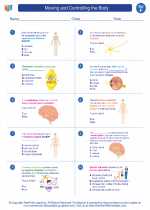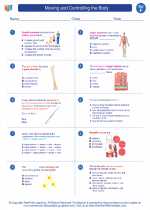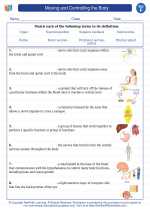Reproductive Organs
The reproductive organs, also known as the genitalia or gonads, are the organs responsible for the production of gametes (sperm and eggs) and the development of the reproductive system. In humans, the reproductive organs include the testes, ovaries, fallopian tubes, uterus, and vagina in females, and the testes, vas deferens, seminal vesicles, prostate, and penis in males.
Male Reproductive Organs
Testes: The testes are the primary male reproductive organs responsible for producing sperm and the hormone testosterone.
Vas Deferens: These are the ducts that transport sperm from the testes to the urethra during ejaculation.
Seminal Vesicles: These glands produce a fluid that mixes with sperm to form semen.
Prostate: The prostate gland produces additional fluids that are added to semen during ejaculation.
Penis: The penis is the male external organ that is involved in sexual intercourse and also serves as the exit for urine from the body.
Female Reproductive Organs
Ovaries: The ovaries are the primary female reproductive organs responsible for producing eggs and the hormones estrogen and progesterone.
Fallopian Tubes: These tubes transport eggs from the ovaries to the uterus and are the site of fertilization by sperm.
Uterus: The uterus, or womb, is where a fertilized egg implants and develops into a fetus during pregnancy.
Vagina: The vagina is the female external organ that serves as the birth canal and also receives the penis during sexual intercourse.
Study Guide
- What are the primary male reproductive organs responsible for producing sperm and testosterone?
- Which female reproductive organs transport eggs from the ovaries to the uterus?
- Fallopian Tubes
- What is the function of the prostate gland in males?
- Produces additional fluids that are added to semen during ejaculation
- What is the role of the uterus in the female reproductive system?
- Where a fertilized egg implants and develops into a fetus during pregnancy
- Which male reproductive organ serves as the exit for urine from the body and is involved in sexual intercourse?
- Penis
Understanding the functions and structures of the reproductive organs is essential for comprehending human reproduction and development. Additionally, this knowledge is crucial for understanding reproductive health, fertility, and the prevention and treatment of reproductive disorders.
.◂Science Worksheets and Study Guides Sixth Grade. Moving and Controlling the Body

 Worksheet/Answer key
Worksheet/Answer key
 Worksheet/Answer key
Worksheet/Answer key
 Vocabulary/Answer key
Vocabulary/Answer key
 Vocabulary/Answer key
Vocabulary/Answer key
 Vocabulary/Answer key
Vocabulary/Answer key
